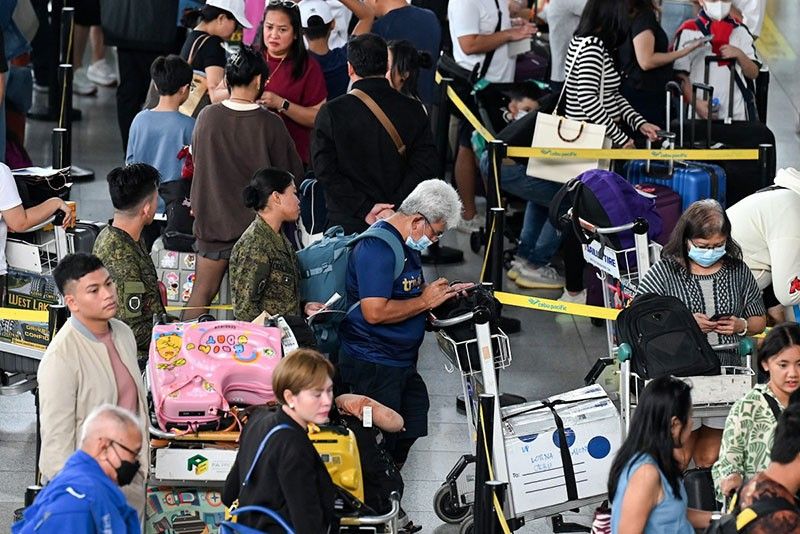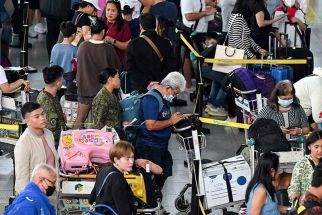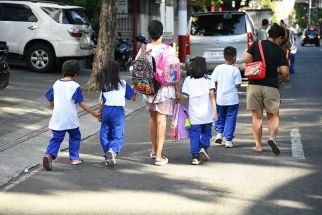Historic 2023 OFW deployment moves Philippines' labor migration forward from pandemic

Migrant worker-sending Philippines has moved forward from the COVID-19 pandemic by posting a 55-year high in the number of deployed overseas Filipino workers (OFWs).
Fresh data from the Department of Migrant Workers (DMW) showed that the Philippines had deployed 2,330,720 land- and sea-based migrant workers in 2023, higher compared to the 2,156,742 OFWs deployed in pre-pandemic 2019.
But various countries’ travel restrictions, economic recessions and labor market closures in 2020 plummeted OFW deployment figures in 2020 by 74.5%. Only 549,841 OFWs were deployed that year.
From 2020 to 2023, OFW deployments rose by 323.9%. Meanwhile, the government’s first record of deployed OFWs showed that 3,694 overseas contract workers (OCWs) were deployed in 1969.
Even the numbers of deployed land-based OFWs (1,752,094) and seafarers (578,626) both reached historic highs, DMW data show. Given that the pandemic shut down worker deployments abroad in 2020, the 2023 numbers for land-based and sea-based migrant workers were 426.7 and 166.3% higher, respectively from pandemic-hit 2020.
DMW is now the country’s lead migration agency, it being the merger of seven agencies and bureaus including the former Philippine Overseas Employment Administration (POEA) that usually releases OFW deployment data.
From the 2023 data, some 1,244,005 OFWs are rehires and 508,089 others are newly-hired migrant workers.
DMW data also showed that 49.8% of deployed OFWs were female, as “domestic cleaners and helpers” make up 31.1% (or 157,812) of these deployments.
For land-based migrant workers, Saudi Arabia emerged as the top destination country (419,776 deployed OFWs) followed by the United Arab Emirates (282,896), Singapore (182,331), Hong Kong Special Administrative Region (175,877) and Qatar (138,193).
As for seafarers, able seamen are the top skill (80,471) while officers (52%) make up the most seafarers by category of these merchant marine fleet.
Meanwhile, passenger ships (151,942 seafarers) form the leading vessel type of Filipino seafarers, as ships whose flag of registry came from the Bahamas had the most number of seafarers (81,273).
The COVID-19 pandemic resulted in the return and repatriation of an estimated 2.3 million OFWs who suffered job losses, insufficient incomes and health problems. From March 2020 to August 2022, records from the Inter-Agency Task Force against Emerging and Infectious Diseases (IATF) show that the 2,348,098 returnee OFWs nearly outnumbered the 2020-to-2022 deployed OFWs (Total: 2,498,305).
The droves of return prompted had government agencies to pivot towards providing economic reintegration support to returnee OFWs through entrepreneurial loans, cash grants and skills training.
A 2021 survey by the International Organization for Migration (IOM) of over-8,000 OFW returnees showed that majority of them wish to go back and work abroad if borders re-open and overseas labor markets re-hire foreign workers.
The Philippines felt the overseas job losses given the pandemic while it almost saw the drastic decline in cash remittance flows from abroad. In 2023, the Philippines received record-high cash remittances (US$33.49 billion).
In 2021, analysts like University of the Philippines political scientist Dr. Jorge Tigno think that pre-pandemic migrant deployment “will not return overnight”.
But given the Philippines’ own economic recovery efforts, Tigno wrote that “The Philippines needs labor migration to weather through future economic crises, as well as to address the socio-economic issues caused by the pandemic.”
“In the absence of significant foreign direct investments entering the economy, the overseas employment program represents the only viable economic strategy the country has for some time to come,” Tigno added in a UP Center for Integrative and Development Studies (CIDS) paper.
Yet migrant civil society groups fear that continued labor migration post-pandemic will see persisting labor-related abuses and exploitation of Filipino workers in host countries.
This coming May 1, the country commemorates the 50th year of the 1974 Labor Code (Presidential Decree 442), whose provisions instituted the formalizing of what is called the country’s “labor export program."
Jeremaiah M. Opiniano is a reporter and co-founder of the Overseas Filipino Workers Journalism Consortium (OFWJC), a nonprofit news group covering the Philippines’ overseas migrants.
- Latest
- Trending

































